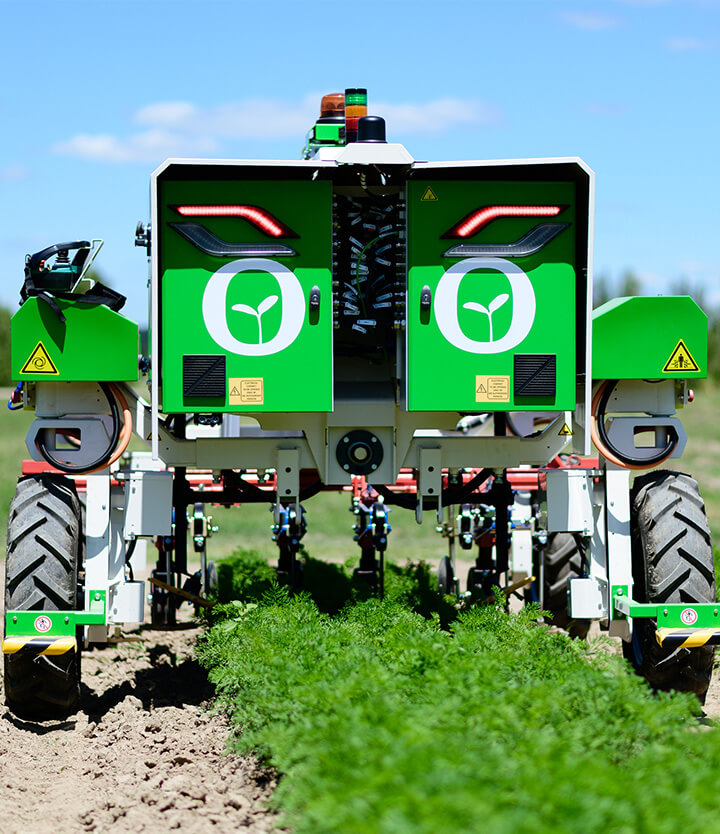Oz has started work in crops for seed production. Their long cycles alone can explain the interest in using Oz, compared with other towed mechanical tools. Serge Bouet, regional engineer with the FNAMS (Fédération Nationale des Agriculteurs Multiplicateurs de Semences) [National Federation of Farm Seed Producers] answers our questions in the context of the Agrosem project.
Agrosem: dispensing with synthetic products in seed production
“The specifications of farmers and seed producers are very specific in terms of varietal purity”. For Serge Bouet “the validity of the contract made between the producer and his relay company is at stake”.
The removal of weed seeds from certified consignments is a requirement which appears more and more complex to manage, however, owing to the removal of chemical substances and the scarceness of products approved for such small areas.
“It’s in this context that the FNAMS launched the Agrosem project. Three of its stations are working on it, including that in Brain sur l’Authion, near Angers”. The partners are the INRA [National Institute for Agricultural Research], Angers Agricultural College, the Chamber of Agriculture of the Pays de Loire, the Acta network of agricultural institutes, the Arvalis Research and Development Institute and the UFS [Union of French Seed-producers]. “The goal is to offer technical itineraries which are 100% free from synthetic products using bio control, mechanical weeding, crop rotation and the management of accessories”. The itineraries implemented, costs and effective working times will be studied.
Late interventions in long cycles with reduced compaction, in complete autonomy
“For the moment, Oz is working on the three crops most widely planted: seed-bearing onions, beans and beetroot. The contamination of the inter-row space is a big problem here, particularly with onions, owing to the crops’ thin ground cover.” The FNAMS is planning to study Oz on other rotation crops next: tall fescue, wheat, alfalfa, buckwheat and peas.
There are many different uses for Oz. First and foremost, the robot has benefited from some big innovations over the last few years. “We tried it three years ago on our seed-bearing crops. The integration of GPS in between time has greatly improved its precision”.
Compared with tractor-type towed tools and hoes, it can be used during all the growing stages, even late-on, and even when the pompon seed heads have appeared on the onions.
For Serge Bouet, the advantage is also being able to go over quickly following a period of rain, thanks to its highly reduced weight.
Farmers interested and awaiting the innovations offered by Oz
“Oz is currently working on covered crops. It is put to work every 8 to 10 days mixing the surface earth, as close as possible to the rows. That’s enough to uproot any weeds at a very early stage, using tools such as straight teeth or ploughshares.”
For the FNAMS regional engineer, the results are promising and the robot’s potential is significant and abundant. Next year, the trials will perhaps include sowing seed directly using a seed drill fitted onto Oz.
To integrate the robot into its technical itinerary, he advises re-thinking plots in terms of their structure. The robot has to be able to go over the rows and make a half-turn. This means having adequate soil preparation, optimum residue management and the surface area required at the ends of the plot for manoeuvrability.
From now on, the FNAMS is thinking about feeding back its results to the profession, perhaps at the annual meeting and also through the various support mechanisms at the disposal of technicians or seed producers.
In any case, it is ready to carry on paying special attention to Oz again next year!





